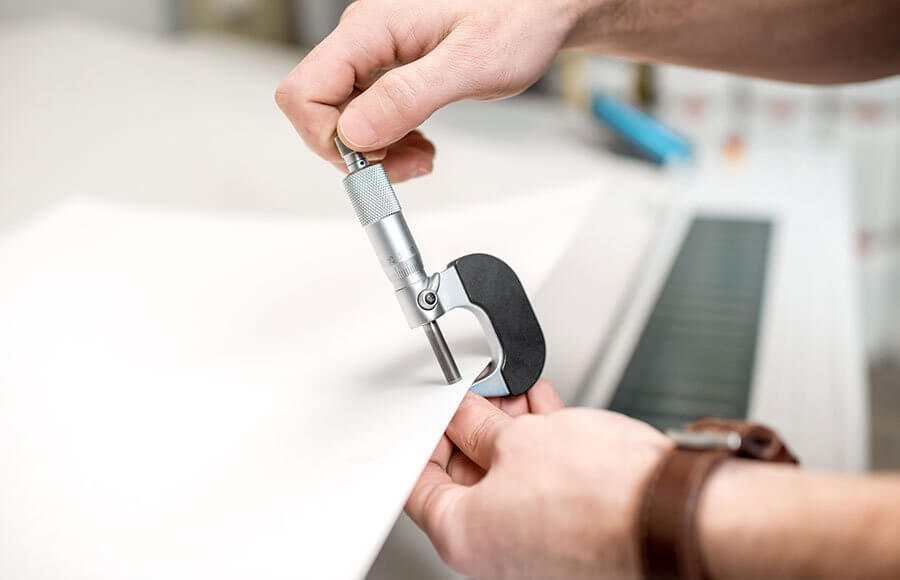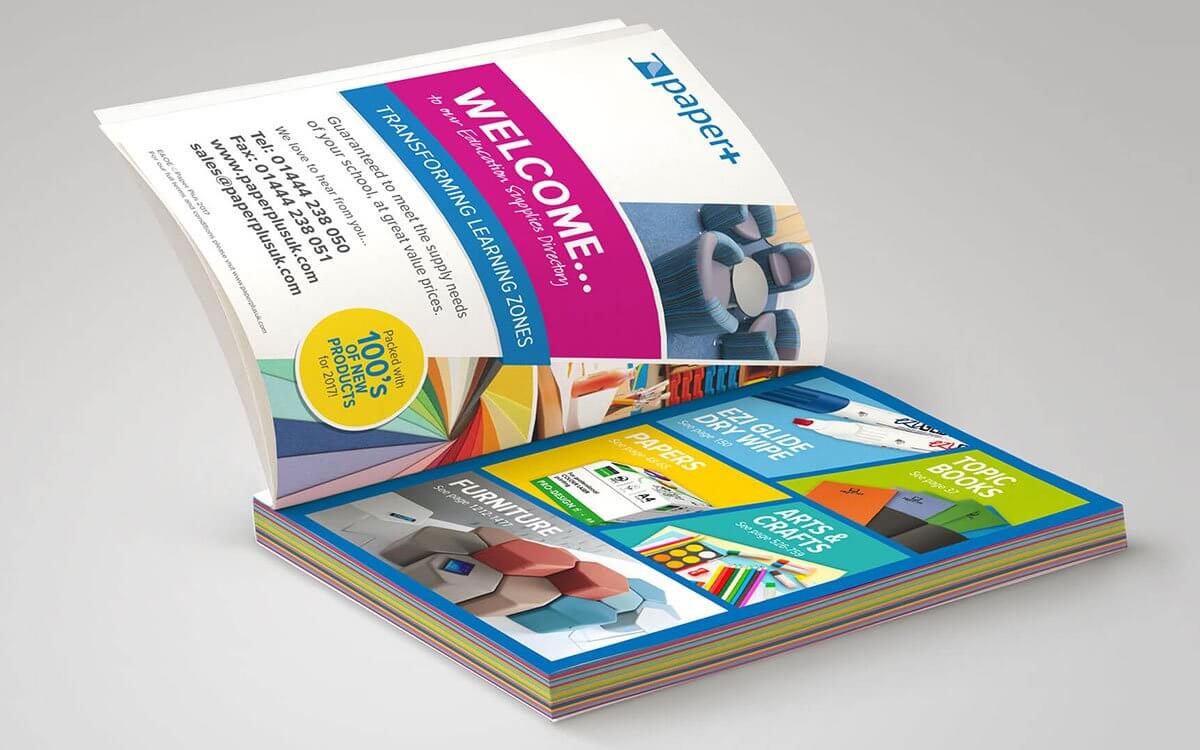Paper Thickness and Weight Explained

Paper Thickness and Weight Explained
If you’re feeling confused and overwhelmed by all the jargon relating to paper thickness and weight, don’t worry, you’re not alone! Even those of us with many years of print industry experience under our belt are still learning new things every day, and when it comes to paper (or ‘stock’ to use the proper term), there’s certainly enough to learn. We have been in the printing industry for over 40 years printing anything from catalogues, magazines and brochures to business cards and calendars. We also use different types of printing like Litho and Digital Printing, so it’s fair to say we know a thing or two.
What does ‘GSM’ mean?
The term ‘GSM’ simply stands for ‘Grams per Square Metre’ and is used for measuring paper weight. Put simply, if you were to take a 1m² piece of a certain type of paper, how much would it weigh in grams?
As a unit of measure, GSM connects the wood pulp producers (who sell by weight) with the paper mills (who work on area). Generally, the higher the GSM the more wood pulp is required to produce the paper. For example, one square metre of 400gsm board will use much more wood pulp than a square metre of 100gsm paper.
However, be aware that GSM is a measure of paper weight and doesn’t necessarily directly relate to paper thickness. More on that shortly…
What does ‘Mic’ mean?
‘Mic’ is an abbreviation for ‘Microns’ which is a unit of measure used for gauging paper thickness. One micron = 1000th of a millimetre, therefore 250mic = 0.25mm and 1000mic = 1mm.
This is where things can get slightly confusing. GSM and Microns are not necessarily directly proportionate to each other. For example, one brand of 100gsm paper can be thicker (in Microns) than another paper of the same weight (in GSM) due to the type of wood pulp it’s made from, or which ‘bulking’ methods are used in its construction. Other manufacturing processes such as ‘calendaring’ involve paper being passed between high pressure rollers to compress the fibres, resulting in paper that is thinner and denser without affecting its weight per 1m².
Why Is Paper Thickness and Weight Important?
Both paper thickness and weight play an important part in the look and feel of the final print result. The right GSM and Mic can create the right first impression before your customer even starts to read what you have to say. Although there is no direct correlation between the weight and quality of your paper, it should be an important factor in your decision about what to use for your print. Certain weights and thicknesses may be more suitable for brochures whereas others may be more suited to desk calendars.
To help you make sense of all this, we’ve listed some common paper weights and their corresponding thicknesses in the quick-reference tables below.
(Please be aware that this information should only be used as a guide because relative gsm/mic can vary from one brand of paper to another and there can even be some minor variation in different production batches of the same type of paper).
| Uncoated Paper (also referred to as Bond, Offset or Laser) | |||||||||||
| Weight | Thickness | Description | |||||||||
| 70gsm | 90mic | Thin document paper | |||||||||
| 80gsm | 100mic | Standard copy paper | |||||||||
| 90gsm | 112mic | Standard copy paper | |||||||||
| 100gsm | 125mic | Standard Letterhead paper | |||||||||
| 120gsm | 150mic | Premium Letterhead paper | |||||||||
| 140gsm | 175mic | Heavyweight paper | |||||||||
| 160gsm | 190mic | Heavyweight paper | |||||||||
| 170gsm | 212mic | Thin board | |||||||||
| 180gsm | 215mic | Thin board | |||||||||
| 210gsm | 250mic | Thin board | |||||||||
| 250gsm | 280mic | Medium board | |||||||||
| 270gsm | 310mic | Medium board | |||||||||
| 300gsm | 350mic | Standard board | |||||||||
| 350gsm | 400mic | Thick postcard board | |||||||||
| 400gsm | 480mic | Thick business card board | |||||||||
| Coated Paper (Gloss, Silk, Matt) | |||||||||||
| Weight | Thickness | Description | |||||||||
| 70gsm | 60mic | Very thin magazine paper | |||||||||
| 80gsm | 70mic | Very thin magazine paper | |||||||||
| 90gsm | 78mic | Thin catalogue paper | |||||||||
| 100gsm | 87mic | Thin catalogue paper | |||||||||
| 115gsm | 98mic | Thin brochure paper | |||||||||
| 130gsm | 110mic | Standard leaflet paper | |||||||||
| 150gsm | 128mic | Standard leaflet paper | |||||||||
| 170gsm | 145mic | Premium leaflet/brochure paper | |||||||||
| 200gsm | 175mic | Heavyweight leaflet paper | |||||||||
| 250gsm | 215mic | Thin board | |||||||||
| 300gsm | 275mic | Medium board | |||||||||
| 350gsm | 325mic | Thick board | |||||||||
| 400gsm | 380mic | Thick business cardboard | |||||||||
As you can see, we’ve focused on metric units of measure here, but there are imperial equivalents. American paperweights are calculated in pounds (lbs) based on different types or categories of paper (Bond, Text, Book, Cover, Index and Tag). Paper thickness can also be measured in ‘thou’ (1/1000 of an inch); with 4 inches being equal to 101.6mm, a simple way to convert is to work on approximately 4 thou per 100 microns.
Is Lower Paper Thickness More Sustainable?
There are many factors which affect the sustainability of your paper. If you want to reduce the environmental impact of your printed communications, you can choose paper with a lower GSM. This way you buy less paper because you get more print area per square meter. By using less paper, you are contributing to a lower environmental impact.
Hopefully that’s helped to unravel some paper-related mysteries for you? Should you have any further questions, or would like to discuss an upcoming print project, don’t hesitate to call us on 01444 236204 or drop us a line – we’d love to chat!

